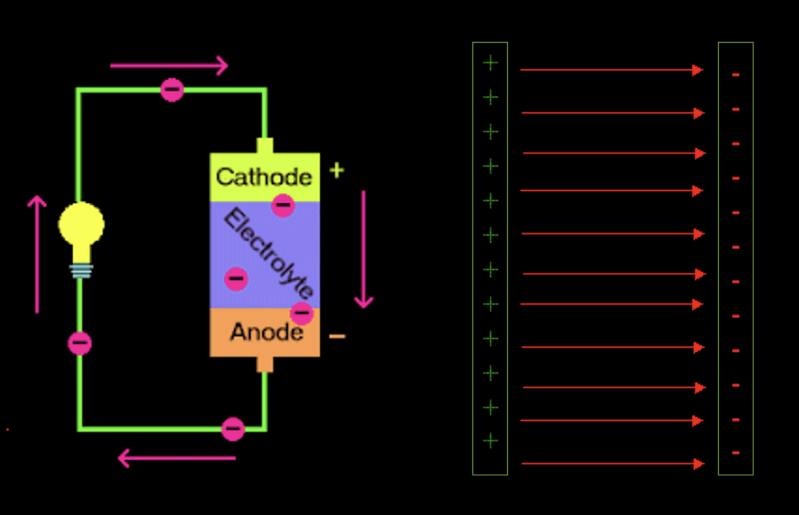Heating Effect of Electric Current
- Electrons and Electric Field
- Ohm's Law
- Ohmic and Non-Ohmic devices (diagrams)
- Electric Resistance and Resistivity
- Voltage, Electromotive Force, and Electric Power
- Simple Circuit
- Resistor in Parallel and Series
-
Complex Circuit and Kirchhoff’s current law
- Electronics
Electrons and Electric Field
Electric fields inside a conductor produce an electric force that accelerates electrons in the circuit, generating currents. This is because electron has a negative charge of 1 and electric force is equal to the product of an object's charge and its electric field. The occurrence of elastic collisions between electrons and the conductor results in a increase in temperature.

- One common misconception: For students who have learned Guass' law, it if common to think that electric field inside a conductor must be zero, contradicting with the state of a wire. However, this statement of zero electric field is true for a perfect conductor in which an electric wire does not belongs to a perfect conductor, so there is no contradiction between Guass' law and electric field in a wire.
Parallel and in Series Circuits
Advantages of a parallel circuit:
- Devices can be controlled independently
- When adding more lamps, the brightness stays the same
- When adding more lamps, the potential difference across a device stay the same
- The potential difference across each device is greater
- The current in parallel is greater in the circuit
- Lamp will be greater in parallel than in series